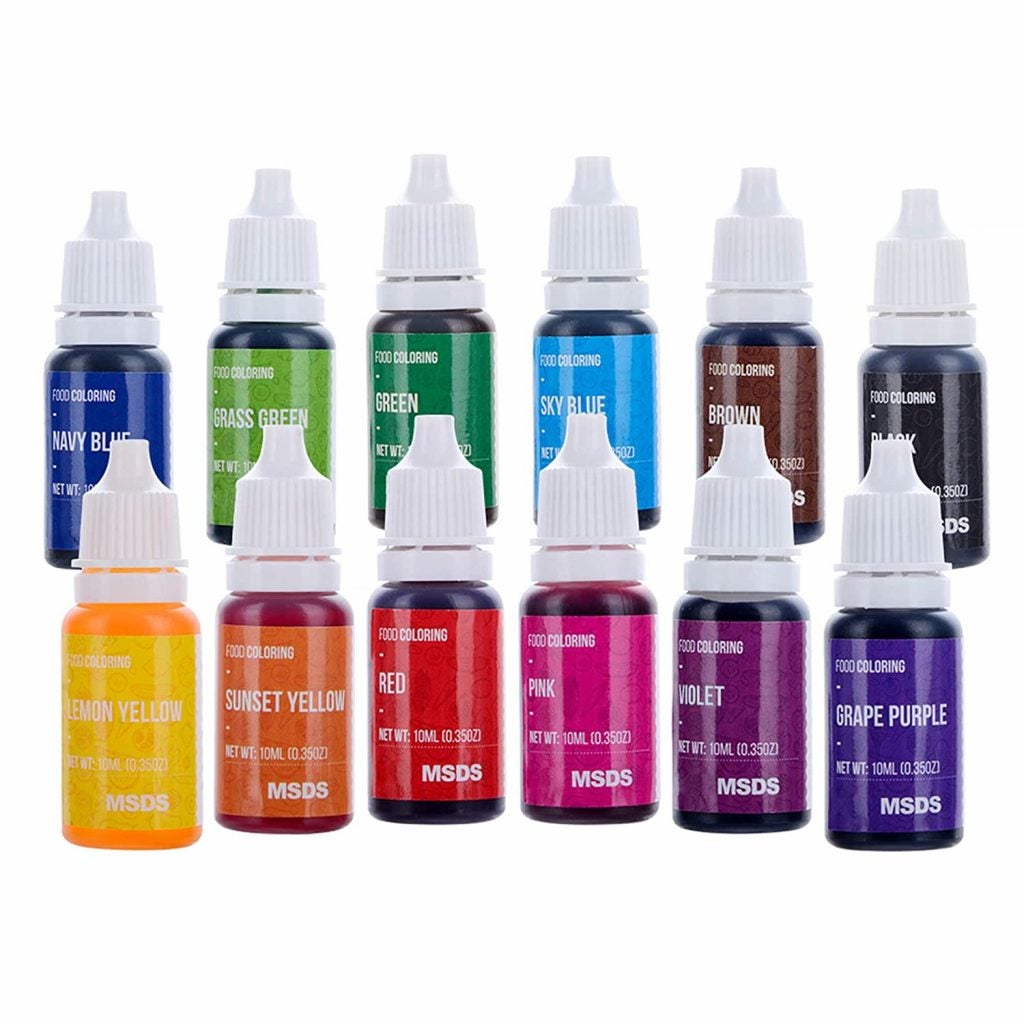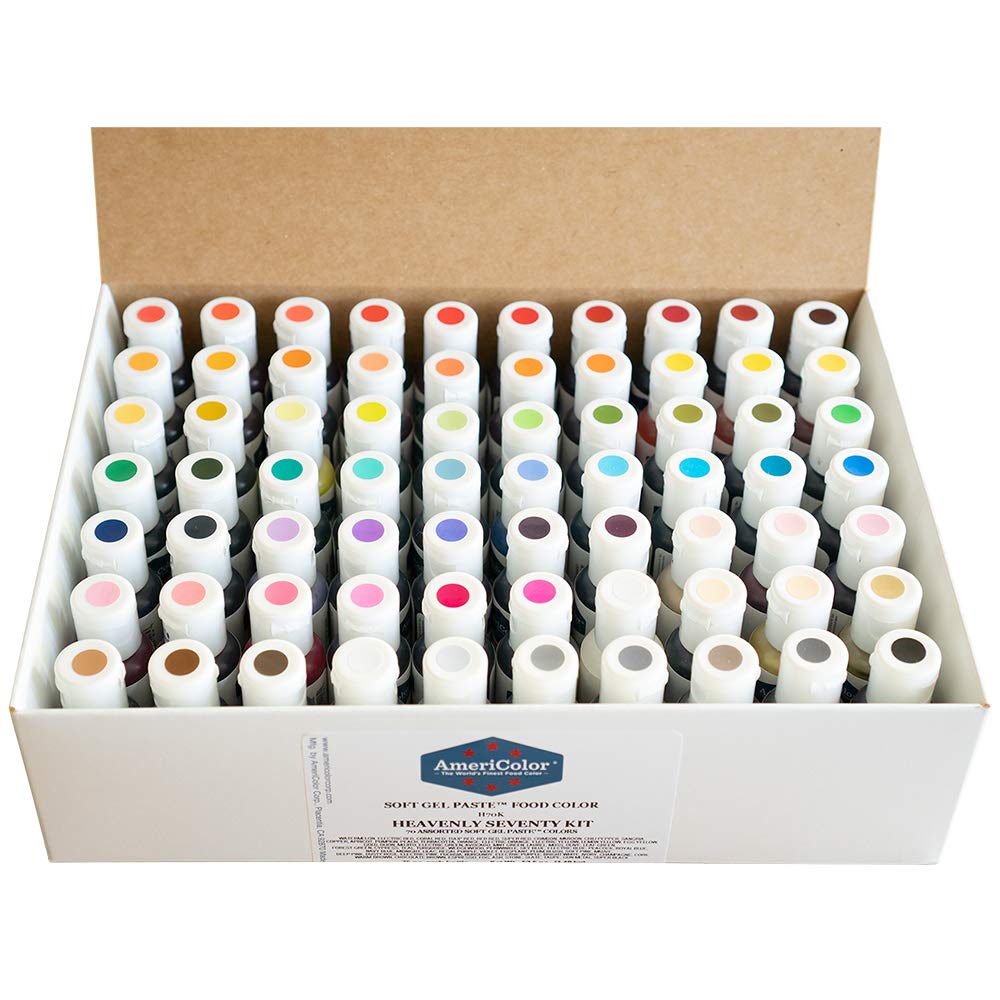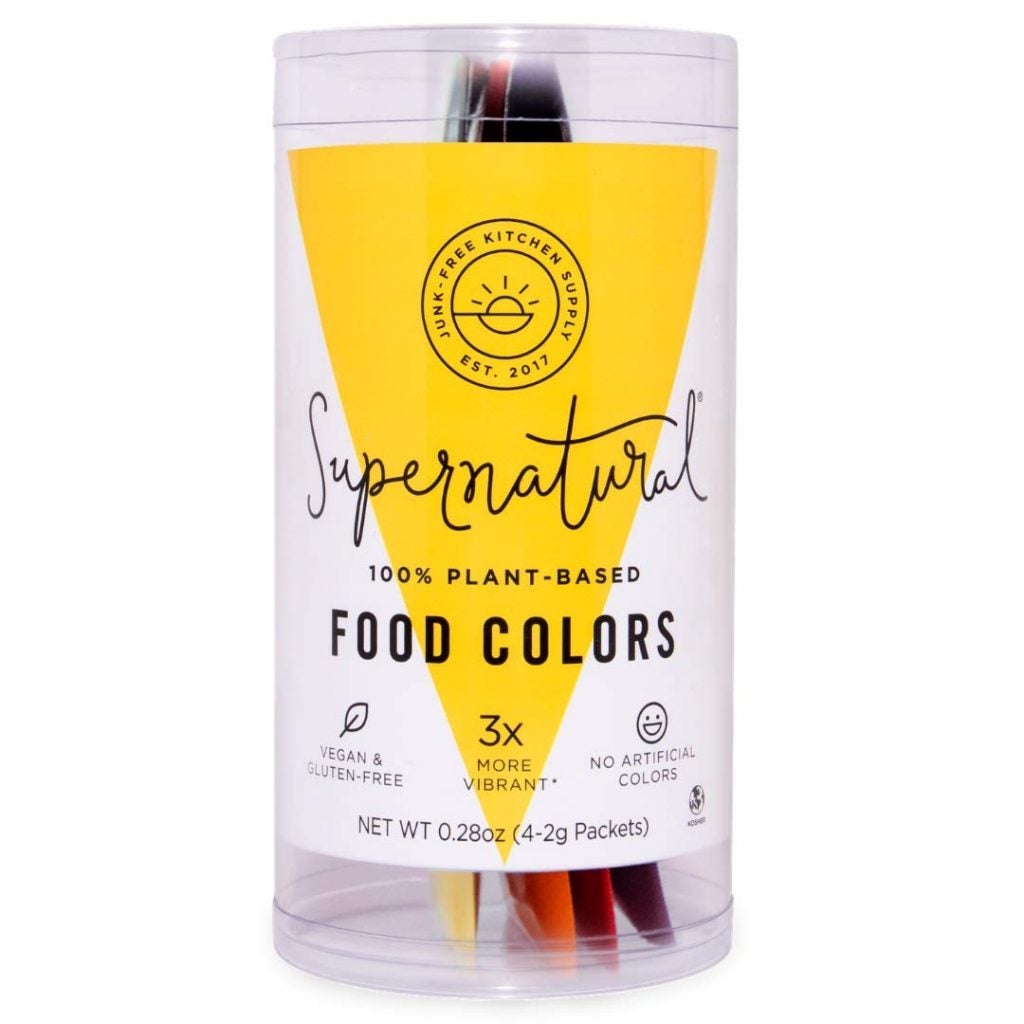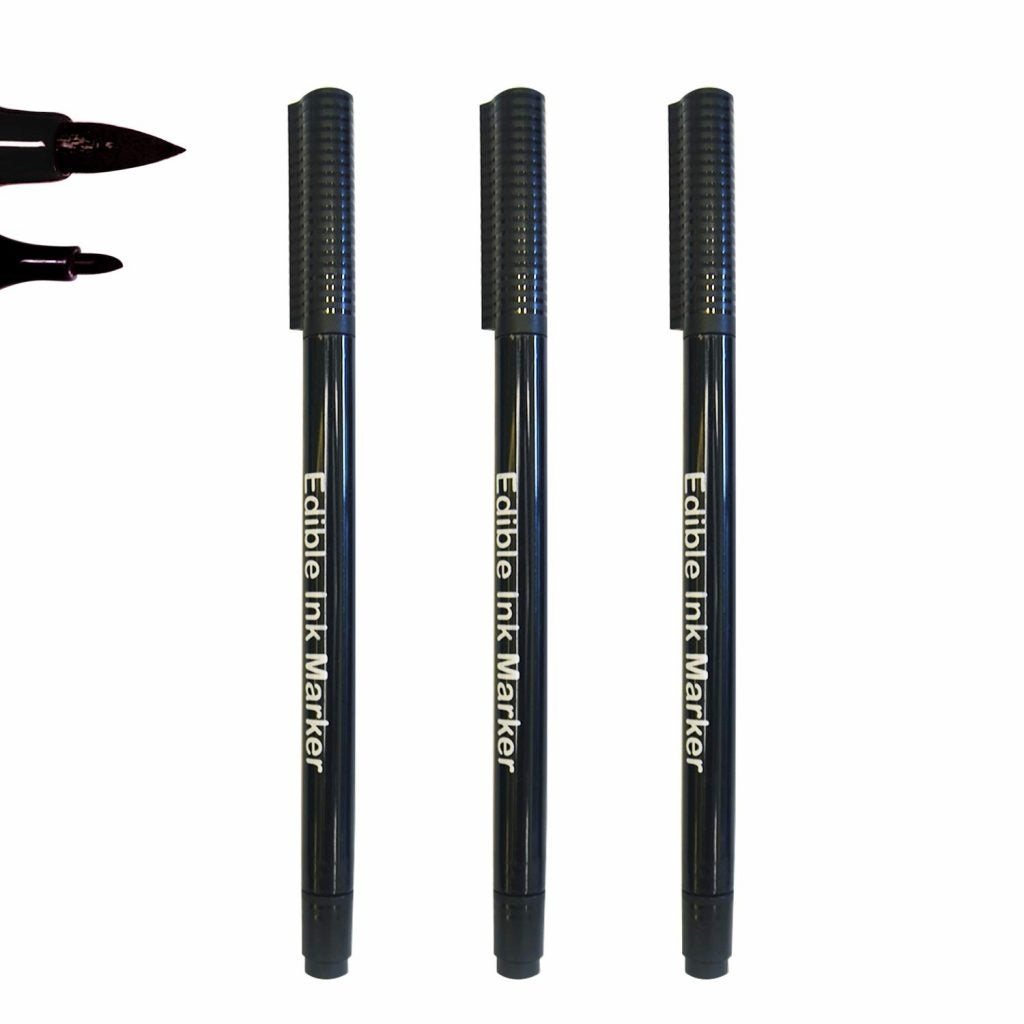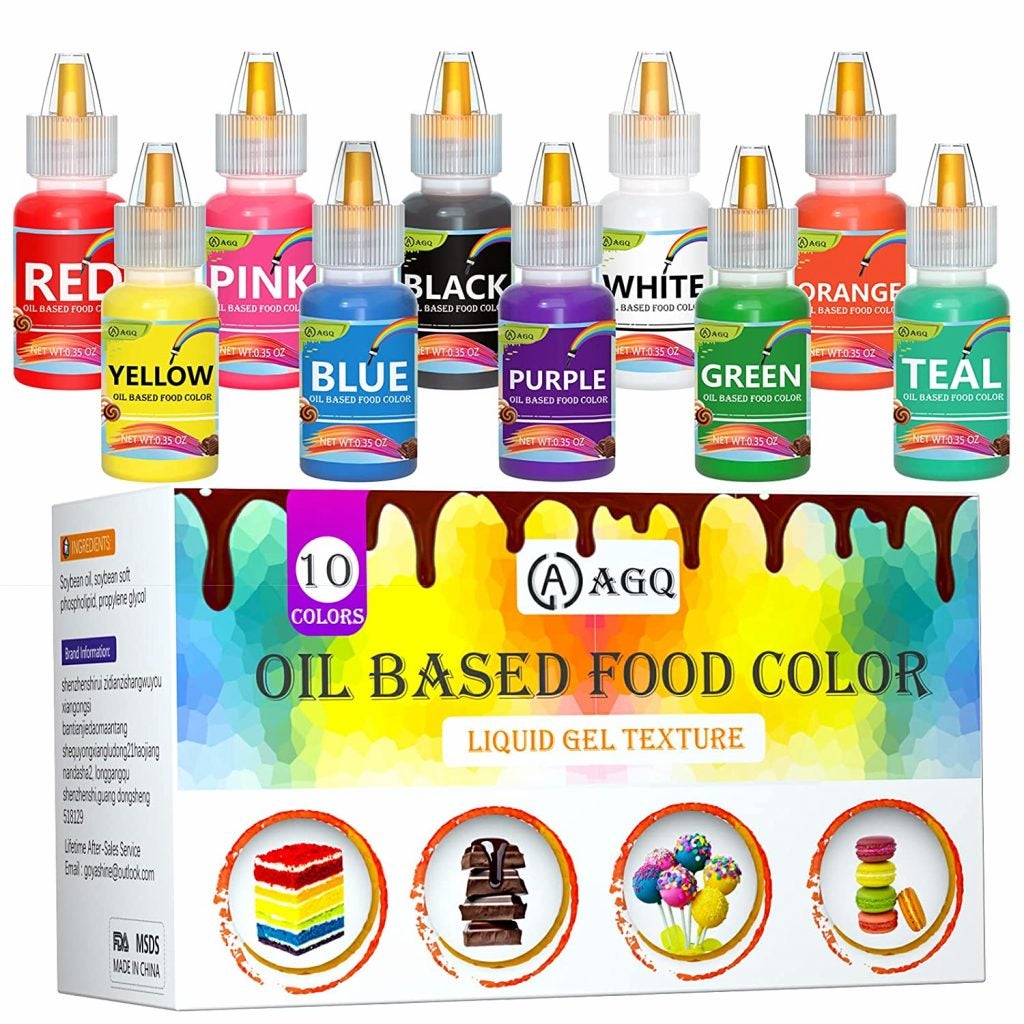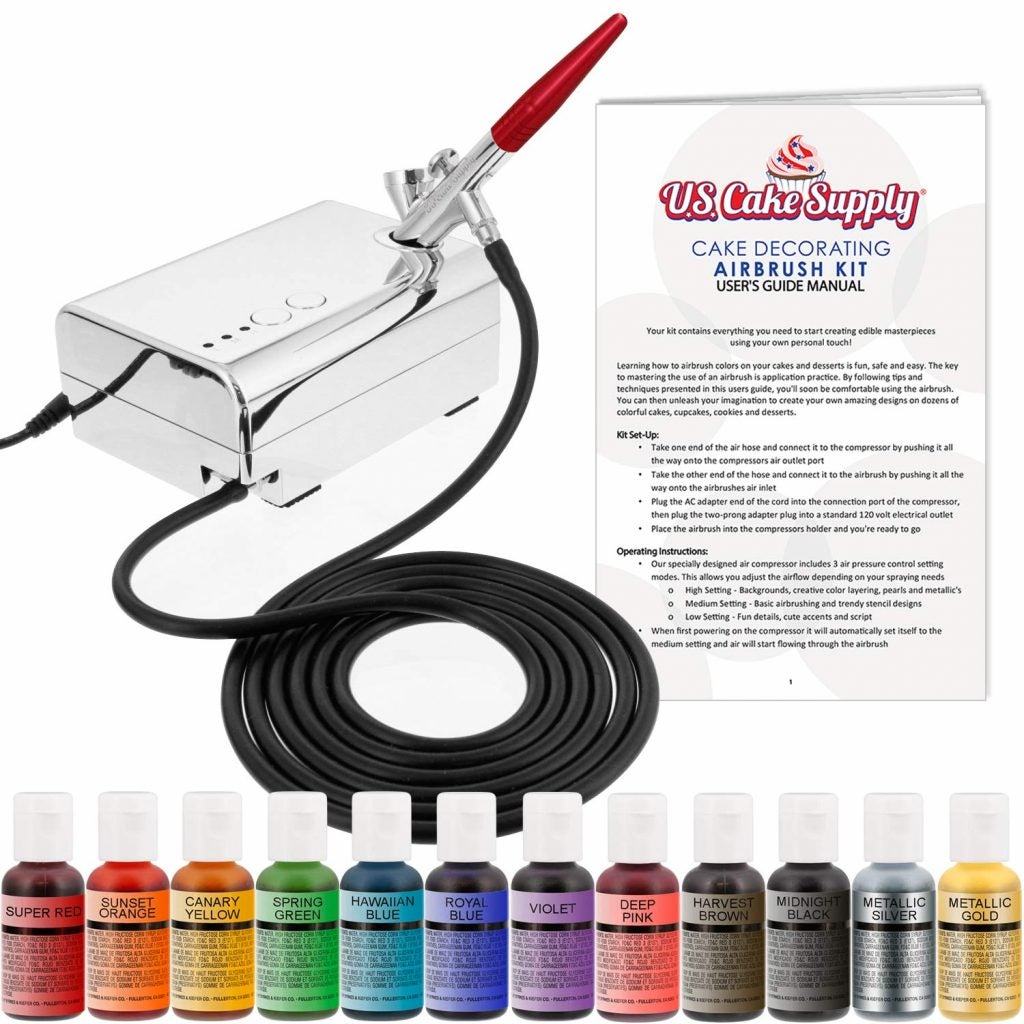Best Food Coloring
The kitchen is a place where many people unleash their creativity, especially when it comes to baking. From cookies and cupcakes to pies and special occasion cakes, the different styles, sizes and flavors that come out of our ovens know no bounds. But add food coloring to the batter, frosting or icing and what we can create reaches a whole new level of artistry.
Luckily, with food coloring, it doesn’t have to be complicated. All it takes is mixing a drop or two of red into your cake batter to transform a plain white cake into a Valentine’s Day surprise. And as your baking skills improve, you can turn the art of blending colors into a three-tiered cake worthy of a spot on the Cake Boss.
Don’t know which food coloring is best? Read on to find our list of the best type of food coloring you can buy online to help you make the right decision for your needs.
1. Top Pick: Nomeca Food Grade Vibrant Food Color
If you’re new to the world of food coloring, then you may feel a bit overwhelmed by all the choices out there and which ones would be good for you. And even if you’ve dabbled a bit in the food coloring palette, you may have only tried one or two colors, wondering what to do or where to go from there.
We’ve chosen Nomeca’s food coloring set because it contains a nice rainbow assortment of 12 highly concentrated colors that you can choose from, giving you the option of using the colors as is, or carefully blending a couple to make original hues and shades.
Each of the .35ml bottles in this set have a drop-mouth design so you can control each drop, an important factor in getting the color just right. And no matter how lovely your food will look in shades of yellow, red or green, the last thing you want is a food coloring that adds a taste or flavor to your food. Happily, this brand is made from safe ingredients and is odorless and tasteless.
The colors in this set are: lemon yellow, sunset yellow, grass green, violet, grape purple, navy blue, sky blue, red, brown, pink, green and black.
Pros:
- Dairy free, peanut free, egg free, nut free and gluten free
- Colors won’t fade or harden
- Suitable for cake decoration, frosting, icing, fondant, batter, Easter eggs, slime and soap
Cons:
- Colors may stain soft furnishings
- No white
- Must be used within six months of opening the bottle
2. Best Gel Coloring: AmeriColor Heavenly Seventy Kit Soft Gel Paste
If you are already a seasoned baker, then you know that all food coloring is not suitable for every application. And if you’re new the game, then you’re probably wondering how one type of food coloring differs from another.
Well, if you are making fondant, royal icing or buttercream and want to get creative with the colors, the best type to use is gel food coloring. Thicker than liquid food coloring, the colors of a gel are more concentrated are more suited for chocolate and fondant, rather than for lightly coloring a cake batter. This soft gel food coloring kit from Americolor is on the expensive side, but it you’re serious about doing some creative and artful cake decoration, you really can’t go wrong with this option.
In this set you will get an amazing assortment of 70 different colors in .75-ounce flip-top bottles for you to mix, match and create into an endless number of shades and hues. There is even white and black to lighten or darken a color you chose. The food coloring will not weep, separate or harden, is certified kosher and made in the USA.
Pros:
- Vibrant, concentrated gel paste food coloring
- 70 different colors
- Certified kosher and made in the USA
- Peanut, tree, nut and gluten free
Cons:
- Expensive
- Not recommended for cake or cookie batter
3. Best Color Spray: Wilton Color Mist, Shimmering Food Color Spray
Not everyone wants color infused into a cake batter, and not everyone is skilled in creating amazing designs with fondant. So, what do you use if you want to add some glam and gloss to your baking in the easiest way possible? Use a food color spray, of course!
This food spray from Wilton gives all bakers, skilled or novice, the ability to have airbrush-like effects on their baked goods using a spray can. This specific food spray is gold, but Wilton has 11 other colors to choose from, all sold separately. With them, you can easily transform a plain iced cake or cupcakes by spraying on some sensational color or add splashes of holiday color to cookies. Simply point and spray!
This food spray is also a great way to color Easter eggs. The no-mess formula comes in a 1.5-ounce can, is tasteless and certified kosher.
Pros:
- No mess formula
- Easy to apply
- No taste
Cons:
- More expensive than other food coloring
- Not suitable to color batter or fondant
- Small can
4. Best Natural Powder: Supernatural Plant-Based Food Color Variety Pack
Using food coloring can be a lot of fun but many brands contain chemical ingredients that contribute to the brilliance of the colors. And while most have been tested and deemed safe for human consumption, some people don’t feel comfortable adding it to their food.
We’ve included this powdered food coloring because the colors are derived from plants such as beets, red cabbage and carrots, but won’t impart any of those flavors onto your food. They contain no artificial dyes, artificial preservatives, or allergens and they are non-GMO, gluten-free, vegan and certified kosher.
The set contains four colors – red, yellow, orange and magic blackberry. Why is it called magic blackberry? Because it will change color depending on what you mix it with – use lemon juice to make pink, milk to make purple, or water for blue.
So suddenly, this pack of four colors is really a pack of six!
Pros:
- Natural, plant-based food coloring powder
- Each package can color two cups of frosting or 24 cupcakes
- Does not contain artificial dyes, gluten, soy or other allergens
Cons:
- Colors are not as vibrant as liquid food color
- Powder can get messy
5. Best Food Color Pen: EdibleInk Dual Tips Food Coloring Pens
Cake and cookie decorating takes a lot of skill and imagination to turn a simple cake batter into a masterpiece worthy of the Cake Boss. But it also takes the right tools. This next pick on our recommendation list is a bit different from traditional food coloring, but has its place nonetheless in a baker’s toolbox.
Ever wonder if those cute painted on mouse ears, eyes and whiskers on macarons are edible? Of course they are and the baker managed to draw them on so perfectly by using a food color pen. This pack comes with three black edible food “ink” pens. They are ideal for adding various fine details to your baked products, and since this set comes with doubled sided tips, you can use the wide tip for coloring and the fine tip for lettering and outlining.
With a little imagination and a steady hand, you can use the food coloring pens to write on fondant, cookies, frosting, white chocolate, marshmallows – and even cute little faces on macarons!
Pros:
- Set of three black food coloring pens
- Ideal for lettering, shading, making faces on baked goods
- Dual sided
Cons:
- Only one color
- Does not color the batter or icing
Find the current price of the Dual Tips Food Coloring Pens
6. Best Oil-Based: AGQ Oil Food Color Set for Sugar Candy Melts
There is a reason why there are different kinds of food coloring – not every kind works well in every baking situation. Take chocolate; turning this delicious confection into a color takes an oil-based food coloring. That’s because a water-based option will ruin the consistency of the chocolate and cause it to seize or become grainy and gritty.
This oil-based food coloring set from AGQ has a high fat content that is soluble with butter or fat so it will mix well with white chocolate or candy melts. The 10 neon colors include red, pink, teal, yellow, orange, black, green, blue, purple and white and does not contain dairy, peanuts, eggs, tree nuts or gluten. They are also tasteless and odorless.
Each .35-ounce squeeze-style bottle is designed to give you full control over how much you add to your chocolate so you can obtain shades from pastel to vibrant, depending on what you are creating. This gel oil-based food coloring blends easily with oily foods and works well with buttercream, meringue, royal icing and chocolate melts.
Pros:
- Dairy, nut, eggs and gluten free
- Oil-based, ideal for chocolate and buttercream
- Squeeze-style bottle
Cons:
- Not suitable to color water or beverages
7. Best Oil-Based Natural Powder: Jelife Powder Food Coloring for Cake Decorating
This powdered food coloring from Jelife is an interesting option, since it has three unique features: it’s a powder; it’s oil-based and can be used for chocolate, royal icing, fondant and buttercream; and it’s made of all natural ingredients extracted from fruit, vegetable juices and seeds.
Included in this set are nine colors — red, yellow, pink, black, orange, blue, brown, purple and green. If you are interested in experimenting with food coloring but are afraid it will go to waste, with this powder form, you don’t have to worry. It has a shelf life of two years. It’s also easy to mix and less messy than other powdered formulas as it comes in a double-sealed design that is easy to pour out and to store.
Jelife’s plant-based food coloring powder won’t change the consistency of your batter or frosting, and it is tasteless and odorless. And with the wide range of colors, you can create exciting baked goods for all of your celebrations, from Easter and Christmas to Halloween and themed birthdays.
Pros:
- Two year shelf life
- Plant-based ingredients
- Easy to mix
Cons:
- Takes a lot of powder to make deep colors
8. Honorable Mention: U.S. Cake Supply – Complete Cake Decorating Airbrush Kit with 12 Vivid Airbrush Food Colors
As we’ve mentioned, adding food coloring to your baked goods, whether in the batter or on the icing (or both), allows you to tap into your inner artist to produce beautiful and unique creations. Using an airbrush to do so will bring it all to a whole new level.
We’ve included this airbrush and food coloring kit for anyone who is interested in developing this skill to add to their culinary repertoire. You will find everything you need to get started: a professional precision airbrush, an air compressor with three air flow settings, 12 vibrant U.S. Cake Supply airbrush food colors, and a detailed user guide manual with airbrushing tips and design techniques.
Learn on your own or with your kids. Simply add a few drops of color to the airbrush, power up the compressor, pull the trigger and start adding color and creating a design by blending and shading colors, writing script and adding accents and even using stencils for more detail.
All it takes is practice and before you know it, you’ll be masterful at airbrushing color onto your favorite baked goods.
Pros:
- Complete kit to airbrush food coloring onto baked goods
- Includes 12 colors
- Includes instruction booklet
Cons:
- Pricey
- Food coloring is specifically to be used with an airbrush
Things to consider:
Food coloring is so pretty. It transforms all of your baking creations into something extra special. And while you may think all food coloring is the same, that’s not the case. The reality is, it is the specific formulation of a particular food coloring that allows it to perform better – or worse – on different kinds of food. For example, liquid food coloring is fine to add a drop of red to a cake batter to turn it a lovely shade of pink or even a darker crimson, while you would use a thicker oil-based or gel formula to change the color of chocolate.
Below we give a short description of the different types of food coloring available on the market.
Liquid:
Liquid food coloring is the most inexpensive option out there and is the one to use when you want to lightly tint a cake, and this only takes a few drops. To make the color darker, you would slowly add a few drops at a time to increase the intensity, mixing well each time to assess the depth of the hue until it is the shade you want. Liquid food coloring is usually made with synthetic dye in a water base.
Liquid gel:
Liquid gel food coloring is similar to the liquid variety since it is made of synthetic coloring with a base of water, glycerin or corn syrup. However, the important factor that makes it different is the viscosity. Liquid gel food coloring, which is also referred to as an oil-based food coloring, is a much thicker, gel-like liquid. The color is very concentrated, which means you would use much less. It is what you would choose if you wanted very vivid, strong colors and is especially effective on chocolate, royal icing and fondant, but take note that it is a bit more difficult to get an even color mix.
Natural:
Most food coloring is packed with synthetic dyes, glycerin or corn syrup that may be a problem for anyone with food sensitivities or if you prefer to have less chemicals and additives in your food. Natural food coloring is usually plant-based, taking its color from strongly pigmented fruit, vegetables, spices and seeds like beet root, turmeric, saffron, red cabbage and carrots. What you are gaining in a healthy alternative, however, you will lose in the vibrancy of the color, which is more subdued.
Powdered:
Powdered dyes can be made of synthetic coloring or from natural, plant-based ingredients and do not contain water, glycerin, or corn syrup. This form of food coloring is best used in recipes that are sensitive to any added liquid, like chocolate or macarons, and should be used sparingly since they can produce a very dark color.
Photo credit: Michelle Lee Photography/Shutterstock

